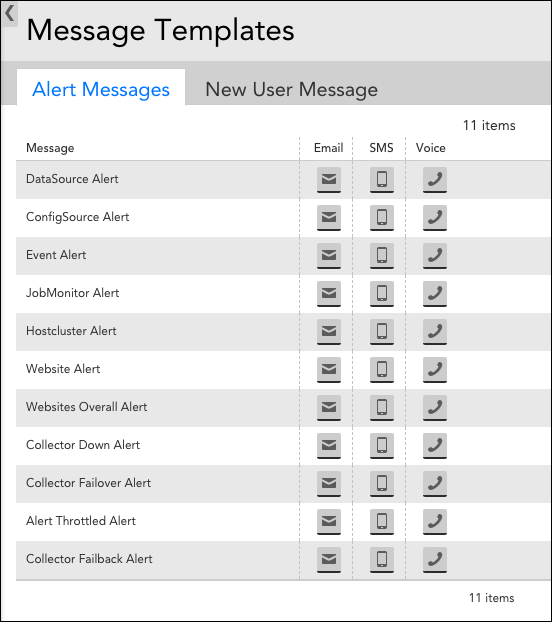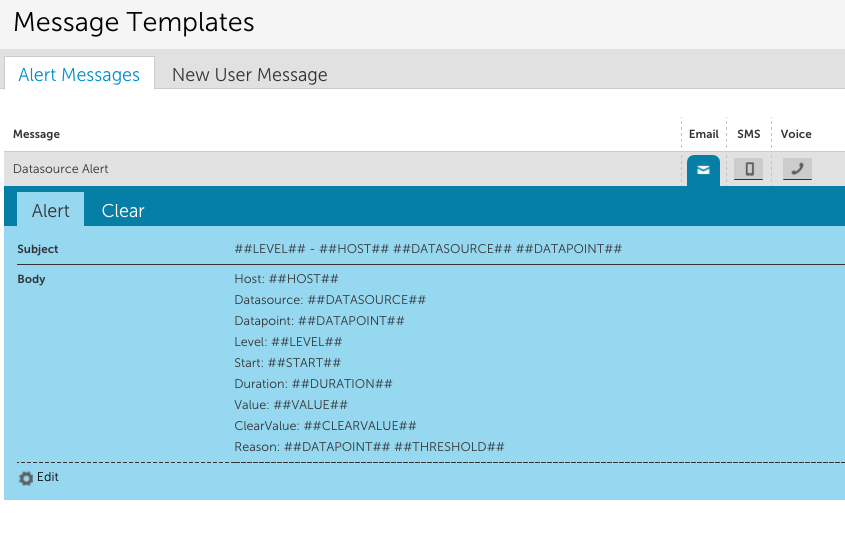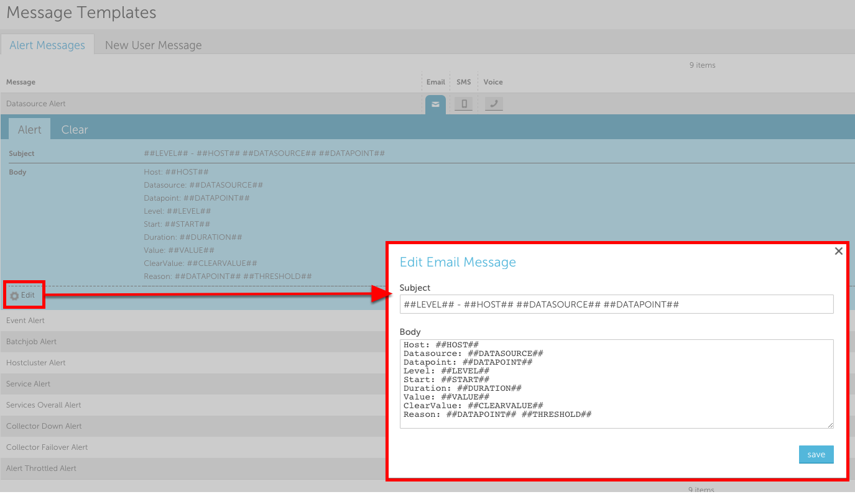Disclaimer: This content applies to the legacy UI and is no longer maintained. It will be removed at a future time. For up-to-date content, see Managing Alert Message Template. At the time of removal, you will automatically be redirected to the up-to-date content.
Alert Messages
Last updated - 25 July, 2025
Overview
The content of alert notification messages is defined by alert message templates. By default, alert notifications will be formatted based on the global alert message templates in the Settings | Message Templates | Alert Templates section of your account. These global templates can be overriden for a particular datapoint, eventsource, or batchjob by defining an alert template for that item. Global templates are only used when an alert template is not defined for an item.
Note: Any timestamps provided in alert notification messages correspond to the time zone configured globally for the portal (Settings | Account Information | Portal Settings). This is in contrast to viewing alerts from within the LogicMonitor UI, where alerts are timestamped according to the user’s configured time zone (assuming one has been set for the user and that it is the current active display time zone, as discussed in Users).
Global Templates
In general, there are six templates that exist for each type of alert, two for each contact method- one for active alert messages and one for cleared alert messages. The contact method specified for a recipient in the escalation chain an alert is routed to determines which template is used for an alert type.
Selecting the icon for the contact method for a particular type of alert will display two templates, one for the alert notification and one for the alert clear notification:
Editing a global template
Select the manage gear icon to edit a global template. Keep in mind that this applies globally to all notifications of that type/contact method (unless overridden at the datapoint, EventSource or JobMonitor level, as discussed in the Overriding the Global Templates section of this support article).
All standard DataSource, EventSource, JobMonitor, and website tokens can be used in alert message templates.
Overriding Global Alert Message Templates
Global alert message templates can be overriden on a case-by-case basis for datapoint, EventSource, and JobMonitor alerts. All of these alert events support custom alert message configurations. This can be useful, for example, if you’d like a unique alert message template for just a handful of datapoints. For more information on overriding global alert message templates for these types of alert events, see Datapoint Overview, Creating EventSources, and Creating JobMonitor Definitions respectively.




